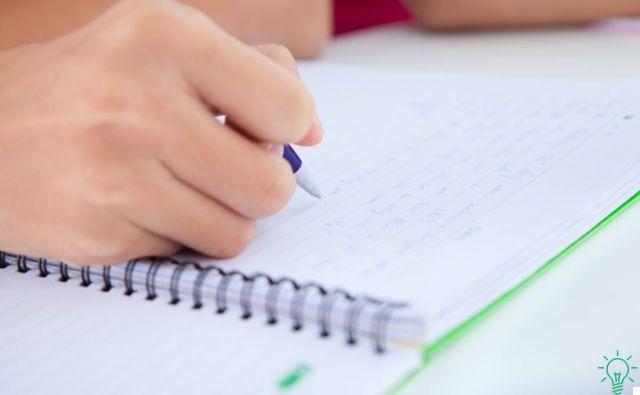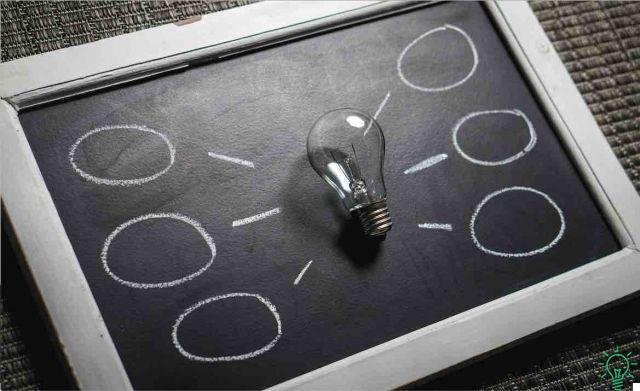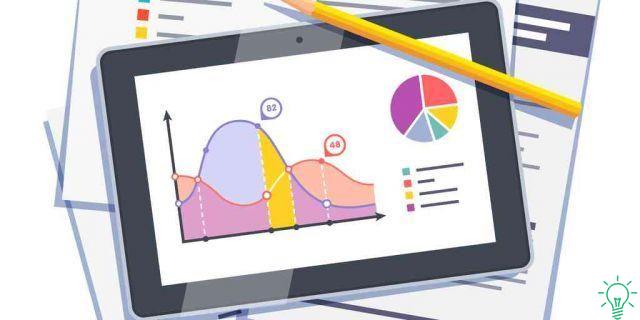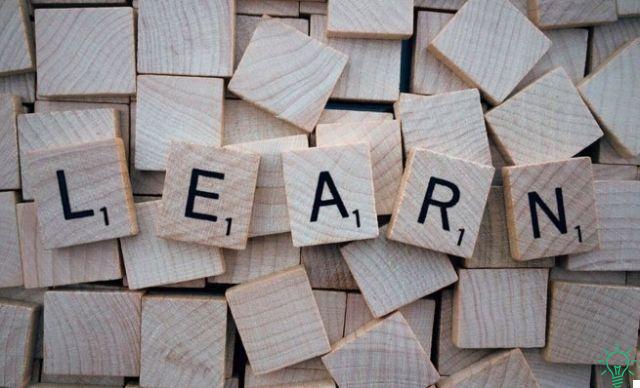
A study method, I have often talked about on the blog, is an articulated and complex system, which involves the most disparate skills, such as:
- Organization
- Motivation
- Habits
- Reading and understanding
- Memory
- Management of energy, time, anxiety
- ....
In the end, however, regardless of how each one deals with these aspects, there comes a crucial and equal moment for everyone: you are faced with a text for the first time and you have to learn it.
It 'just this is the problem that we will face together today.
In fact, practically every day I receive at least one email that focuses precisely on this aspect:
“Anthony, I'm sitting at my desk with the book / notes / slides etc in front of me…. What do I do now?"
The first few times I received such emails I was a little perplexed.
"But how", I said to myself. “There will be 147 different ninja study methods and techniques on the internet! Just try the ones that seem more sensible and choose what is right for you! "
Thinking about it, however, I realized that the problem is just that excess of possibility.
As Barry Schwartz recounts in his book "The Paradox of Choice", when faced with too many alternatives it happens that we get stuck, precisely because of the fear of making mistakes and the anxiety of choosing.
So I set out to answer unambiguously a question that is only apparently simple:
How do you study a text, whatever it is?
And I have developed a method simple, linear, And that was fine in any situation.
Before telling you, however, a premise is necessary.
A universal tool is never the best
Learning is, I believe, one of the most varied activities there is.
They change:
- courses of study (high school, university, masters, specialization schools ...)
- the type of subjects (scientific, humanities, practical, theoretical ...)
- the purposes (exams, competitions, presentations, tests ...)
- the personality, age, possibilities, attitudes of those who have to learn
Just to give a couple of examples of real requests I have received, there is a big difference between learning a hyper-detailed anatomy textbook to pass a first-year medical exam or memorizing a brilliant speech for a business presentation.
So to develop something that works whenever you are in front of a text to learn, a compromise must necessarily be made between many different possible situations.
The result is a far from perfect tool.
In fact, it looks like those tools that can do a bit of everything discreetly, but nothing perfectly.
But if:
- you have to learn any text for any reason
- you are stuck in front of a thousand choices
- you are looking for something solid to start from
… Here is what this system can do for you.
Learn any text… in 7 steps
It doesn't matter your age, your gender, the purpose for which you study, the subject you have to learn.
There are a number of rules that, if applied, will take you step by step towards a deep understanding of what you need to learn.
1. Read fast, but really fast, for about 10-15 minutes.
If the text to be learned is shorter than 15 minutes, it will mean that you will finish earlier.
If, on the other hand, it is longer, as it normally happens for an exam, it means that you will read it just a first piece, and then you will have to repeat these steps for all subsequent ones.
How fast do you have to read? This falls within the variability we talked about earlier.
Things change radically, for example, depending on whether it is a text with theoretical physics formulas or a book about your favorite film director.
So I give you a very wide range: from 50 to 700 words per minute.
The important thing is that you know the purpose of this first reading: it is not neither understand nor memorize, but simply orient yourself on what you will find.
2. Explain in a minute, and in your own words, what you will need to learn
Now that you have done the orientation reading of this first piece, give yourself a minute to repeat in your own words what exactly it is about.
The principle to be used is that of the Feynman technique: be simple, clear and essential as if you were to explain it to a 10-year-old child.
It is very important that you do not exceed one minute!
Having read quickly in fact, you will be able to remember only the main ideas, and not all of them.
No problem.
You must understand that it is absolutely normal that this is the case, and indeed, in the early stages of the study the attempt to remember and understand everything is counterproductive: only generates anxiety.
A minute is therefore more than enough to take stock with yourself on what are the main topics you have read
3. Go back to the "conspicuous points" and individual one by one.
At this stage you have to pick up the text and limit yourself to highlight and read only any conspicuous pointsi.
In the jargon of navigation, conspicuous points are those particular natural or man-made structures that have the characteristic of can be easily identified and observed from afar, and thus constitute a point reference during navigation.
When studying a text, its conspicuous points are diagrams, infographics, summaries, tables, questions at the end, figures, etc.
They normally concern the most important things, and represent them in a summary or schematic way. Often through graphic elements that are easy to remember thanks to visual memory.
4. Reread and underline.
Now go back to the beginning of the piece of text you read and start reading again.
This time you will do it calmly, underlining no more than 1-2 words per line, and stopping after about two minutes.
The purpose of this phase is:
- Split the piece of text from step 1 into smaller fragments
- Comprehend more thoroughly what you read
- Select the most important elements of each sentence
It is very important, no matter how much detail you want to memorize, to really limit yourself to a couple of words at most per row.
The fact of giving yourself a limit:
- It will make you focus better: you are forced to choose! Otherwise you risk triggering the automatic pilot and stressing without thinking.
- It will avoid you to end up with most of the text underlined. Which, frankly, is useless.
5. Make active recall of the fragment you have just read.
Before you go on to read and underline the next fragment, repeat without looking at what you just finished.
This allows you, as I tell in the article on active recall:
- To clarify what you know and what you don't know
- To do a first round of strengthening of remembrance
Each repetition ends by double-checking on the text what you have remembered and what you have not remembered.
6. Repeat steps 4 and 5
Until you haven't completely revised the entire piece of text that you quickly read in step 1
At that point, you will have already "worked" it 5 times:
- reading very fast to guide you
- just looking at the conspicuous points
- reading calmly, in pieces, while you underline,
- calling it back to the mind
- checking quickly what did you remember and what not
You now find yourself with a very important choice to make: schedule o non schedule? (or, map or not, for those who use mind maps).
Making patterns takes a lot of time, but:
- It can help build understanding and memory
- It saves you time in reviewing
However, especially in certain subjects, it may not be the best choice.
For example, when it comes to texts to remember in such a detailed way that you force yourself to write down so many things on the scheme, thus wasting a lot of time writing.
Normally I recommend a "mixed" solution: make outlines of things that are more difficult to organize, understand and remember mentally.
The rest you will review in the book.
In any case, if you do the pattern, do it the next day or two days later!
This allows you to:
– Far stratify the concepts a bit: at the moment you seem to have understood everything, but is it really so? In the following hours your mind "it will work without your knowledge”About what you have studied and if there is something unclear or that does not convince you, it will analyze it and perhaps solve it.
- Memorize better thanks to the spaced repetition mechanism.
Finally, of course, whenever you have applied all the steps to one piece of text, you will be able to move on to the next, and so on until the end.
At that point you will find yourself with a good knowledge of all the topics covered, and you will have to decide if and how many reviews you will have to do.
7. Review as often as necessary
Here you will really have to decide how many times to review.
However, I can tell you that, if you have done the previous steps well, the reviews will be dedicated almost exclusively to memorization and fluency of exposure.
In fact, you will have already acquired a good understanding of
The indications I can give you are:
- If it is a subject you are studying for your own pleasure, you may not need to review it.
- If you are studying for a "university" level and length exam, you will need at least 2 reviews
- For very difficult, long and mnemonic exams, 4-5 reviews may be necessary
- Always review, in any case, according to the principles of spaced repetition, and you will have maximum efficiency
Conclusions
In the end, as you have seen, the method I propose to you for dealing with any text is certainly not "rocket science".
I simply recombined a mix of a few into a series of logical steps solid principles of study:
- Divide the material into "digestible" parts
- Make a map of the route orienting yourself on what you will need to know
- Focus on what's essential (put the first things first!)
- Keep the focus high
- Explain things in a simple way
- Give yourself honest and frequent feedback
- Repeat a lot, and at optimal intervals
This, for many, can be a point of arrival: in fact, it removes the problem of excess choice and provides a tool easy to calibrate on your needs.
For some, it might be a starting point on which to graft more sophisticated skills, such as skimming, speed reading, mental palace, phonetic conversion ...
The important thing is to do it calmly and calmly, knowing that you can count on a basic method that does not leave you sitting at your desk asking yourself "and now how do I learn this?", But takes you through a series of small steps to be able to learn any text.

























